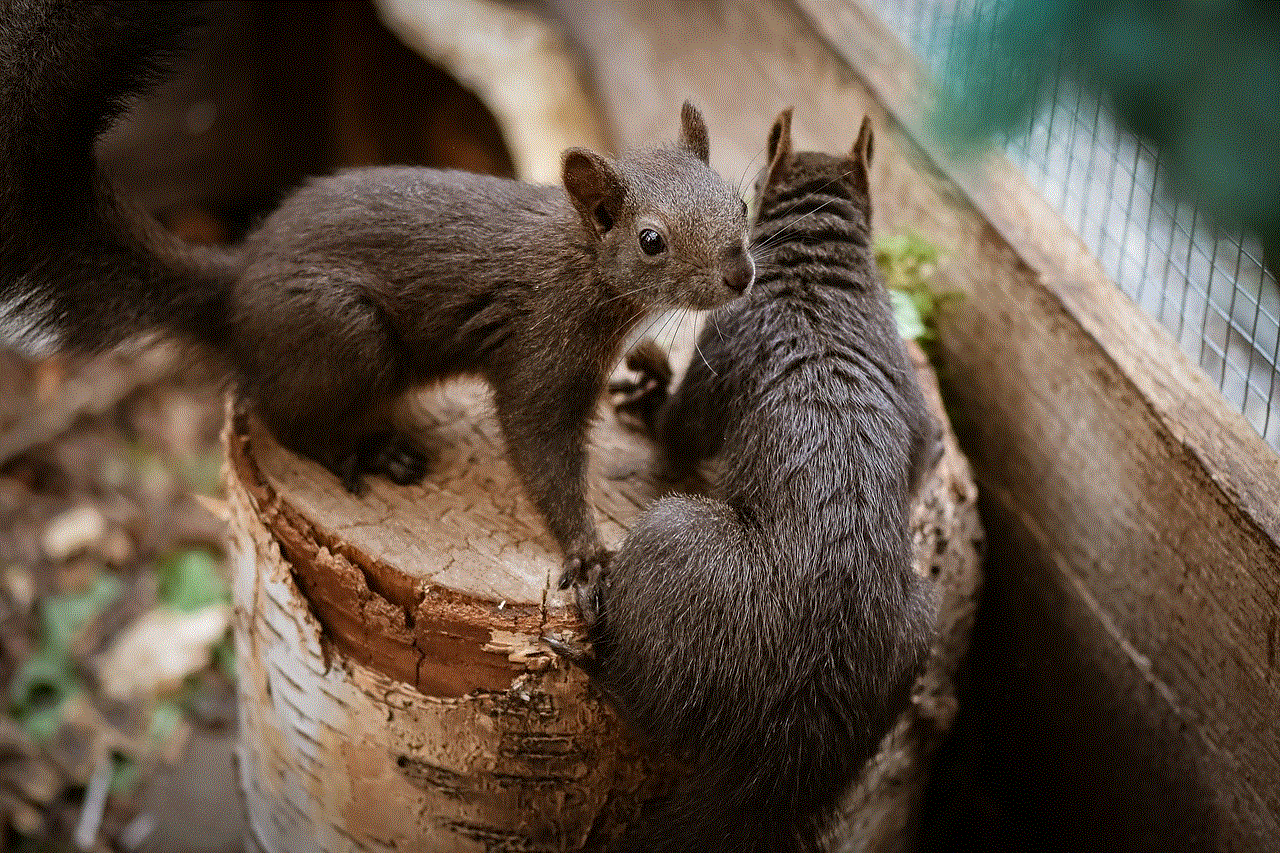how to restrict youtube
YouTube has become the go-to platform for people all over the world to access a vast array of videos, from educational content to entertainment. However, with its widespread popularity, there have been concerns about the type of content being uploaded and the impact it may have on viewers, particularly children. As a result, there has been a growing need to restrict YouTube and protect users from potentially harmful or inappropriate material. In this article, we will explore the various ways in which YouTube can be restricted and the importance of implementing such measures.
1. Parental Control Settings
The most effective way to restrict YouTube is through parental control settings. These settings allow parents to filter out content that may not be suitable for their children based on age, language, and other factors. This feature is available on both the website and the app, making it easily accessible for parents to set up. With parental control settings, parents can also restrict the amount of time their child spends on YouTube, ensuring they do not become addicted to the platform.
2. Restricted Mode
YouTube’s Restricted Mode is another useful tool for restricting content on the platform. This mode filters out potentially mature or inappropriate content, such as violence, nudity, and vulgar language. While it is not 100% accurate, it is a step in the right direction to ensure a safer viewing experience for users, especially children. Restricted Mode can be easily activated by clicking on the profile icon and scrolling down to the bottom of the page.
3. Third-Party Apps
There are several third-party apps available for parents to restrict YouTube access on their child’s devices. These apps allow parents to block certain keywords, channels, or videos, giving them full control over their child’s viewing experience. Some of these apps also offer real-time monitoring, so parents can keep an eye on their child’s YouTube usage and intervene if necessary.
4. Content Moderation
YouTube has been under fire in recent years for allowing inappropriate content to be uploaded and viewed on its platform. In response, the company has implemented stricter content moderation policies and increased the number of human moderators. These moderators review videos flagged by users and remove them if they violate YouTube’s community guidelines. While this may not restrict YouTube entirely, it does help in removing harmful and offensive content from the platform.
5. Age Verification
Another way to restrict YouTube is by implementing age verification measures. Currently, anyone can create a YouTube account regardless of their age, which means children can easily access age-inappropriate content. By implementing age verification, YouTube can ensure that only users of a certain age can access certain types of content, thus reducing the risk of children being exposed to harmful material.
6. User Reporting
YouTube has a feature that allows users to report videos or channels that they believe violate the platform’s community guidelines. This has been an effective way to restrict YouTube as it relies on the community to flag inappropriate content. Once a video or channel is reported, YouTube reviews it and takes appropriate action, including removing the content or channel entirely. This feature empowers users to take control of their viewing experience and helps keep the platform safe for all users.
7. Education and Awareness
Another crucial aspect of restricting YouTube is educating users, especially children, about the potential dangers and risks of the platform. Parents should have open and honest conversations with their children about the content they are consuming and the importance of being responsible digital citizens. Schools can also play a role in educating students about safe internet usage and the importance of not sharing personal information online.
8. Communication with Content Creators
YouTube has a vast community of content creators who upload a wide range of videos daily. While most creators are responsible and upload appropriate content, there are some who may not adhere to YouTube’s guidelines. By communicating with content creators and holding them accountable for their content, YouTube can ensure that only appropriate content is being uploaded and promoted on the platform.
9. Age-Appropriate Content
One of the main concerns about YouTube is the availability of age-inappropriate content, particularly for children. To address this, YouTube has launched YouTube Kids, a separate app specifically designed for children under the age of 13. This app offers a safer viewing experience for children, with parental controls and a curated selection of age-appropriate content.
10. Government Regulations
In some countries, governments have stepped in to regulate YouTube and restrict certain types of content. For example, in the UK, YouTube has been required to remove videos that promote hate speech or violence. While this may not be a feasible solution for all countries, it shows that governments are taking the issue seriously and are willing to take action to protect their citizens.
Conclusion
In conclusion, the need to restrict YouTube is essential in ensuring a safe and responsible viewing experience for all users. While YouTube has taken steps to address this issue, more can be done to protect vulnerable users, particularly children. Parents, schools, content creators, and YouTube itself have a role to play in creating a safer online environment. By using a combination of the methods mentioned above, we can restrict YouTube and promote a safer and more responsible use of the platform.
best learning apps for kids
As technology continues to advance, the use of educational apps has become increasingly popular for parents looking to supplement their child’s learning experience. With so many options on the market, it can be overwhelming to determine which apps are truly beneficial for children. In this article, we will explore the best learning apps for kids, providing in-depth reviews and analysis to help parents make informed decisions.
1. ABCmouse
ABCmouse is a comprehensive learning app for children aged 2-8 years old. It covers a wide range of subjects, including reading, math, science, and art. The app uses a combination of fun animations, games, and interactive activities to engage children and make learning enjoyable. It also offers a progress tracking feature, allowing parents to monitor their child’s progress and identify areas that may need extra attention.
2. Duolingo
Duolingo is a highly acclaimed language learning app that is suitable for all ages, including children. It offers a variety of languages, including Spanish, French, and German, and uses a gamified approach to make learning a new language fun and engaging. With its user-friendly interface and regular updates, Duolingo is a great way for kids to expand their language skills.
3. Khan Academy Kids
Khan Academy Kids is an early learning app designed for children aged 2-7 years old. It offers a wide range of subjects, from math and reading to social-emotional learning and creative expression. The app features interactive activities, videos, and books, all of which are aligned with Common Core Standards. It also provides personalized learning, adapting to each child’s individual needs and progress.
4. Endless Alphabet
Endless Alphabet is a popular app for teaching children the alphabet and building their vocabulary. It uses colorful and engaging animations to introduce new words and their definitions. Children can also interact with the letters and their corresponding words, making learning fun and interactive. The app is suitable for children aged 4 and above and is available in multiple languages.
5. ScratchJr
ScratchJr is an app that teaches children the basics of coding through a simple and user-friendly interface. It allows children to create their own interactive stories and games by dragging and dropping blocks of code. With its focus on creativity and problem-solving, ScratchJr is a great way to introduce kids to the world of coding and technology.



6. Dr. Panda Town
Dr. Panda Town is a virtual playhouse where children can explore and interact with different characters and environments. The app promotes imaginative play and allows children to role-play in different scenarios, such as a fire station, supermarket, and more. It also encourages problem-solving and creativity, making it a fun and educational app for kids.
7. Sago Mini World
Sago Mini World is a collection of over 30 mini-games designed for children aged 2-5 years old. The games cover a variety of topics, including math, language, and social-emotional learning. The app features adorable and colorful characters that children can interact with, promoting imaginative play and creativity. It also offers a safe and ad-free environment, making it a great choice for young children.
8. Toca Life World
Toca Life World is a virtual sandbox app that allows children to create and explore their own worlds. It features a variety of locations, characters, and objects for children to play with and customize. The app encourages open-ended play, allowing children to use their imagination and creativity to create their own stories and scenarios.
9. Quick Math Jr.
Quick Math Jr. is a math app designed for children aged 3-7 years old. It offers a variety of games and activities that cover basic math concepts such as counting, addition, subtraction, and more. The app also adapts to each child’s level, providing personalized learning and progress tracking. With its colorful graphics and fun approach to math, Quick Math Jr. is a great way to make learning math enjoyable for kids.
10. Curious World
Curious World is a subscription-based app that offers a wide range of educational content for children aged 2-8 years old. It includes interactive games, videos, and books covering various subjects, including math, language, and science. The app also features a parent dashboard, allowing parents to track their child’s progress and tailor the content to their child’s individual needs.
In conclusion, educational apps can be a valuable tool for children’s learning, but it’s important to choose the right ones. The apps mentioned in this article offer a variety of educational content, engaging activities, and personalized learning, making them some of the best learning apps for kids on the market. By incorporating these apps into your child’s learning routine, you can make learning fun and effective, setting them up for academic success.
13 year old nudes
With the rise of technology and the internet, the issue of underage individuals sharing explicit images has become a major concern. In recent years, there has been an alarming increase in the circulation of nude images of minors, particularly 13 year olds. These images have been shared and distributed through various platforms, from social media to messaging apps, and have caused distress and harm to the young victims. In this article, we will delve deeper into the issue of 13 year old nudes, discussing the prevalence, causes, and consequences of this disturbing trend.
Prevalence of 13 Year Old Nudes
The emergence of technology and social media has made it easier for individuals to share and access explicit images. According to a study by the National Society for the Prevention of Cruelty to Children (NSPCC), one in seven young people aged 11-18 have received a sexual image, while one in twenty have shared one. This means that there is a high possibility that 13 year olds are among those who have sent or received nude images. Furthermore, a survey conducted by the NSPCC found that one in ten 12-13 year olds have taken explicit images of themselves.
It is also important to note that the circulation of 13 year old nudes is not limited to the victims’ peers. In some cases, these images are shared with adults who use them for their own sexual gratification. This further highlights the vulnerability of young individuals and the need for stricter laws and regulations to protect them.
Causes of 13 Year Old Nudes



There are several factors that contribute to the sharing of 13 year old nudes. One of the main reasons is peer pressure. In today’s society, there is a constant pressure to fit in and be accepted by others. This pressure can lead young individuals to engage in risky behaviors, such as sending nude images, in order to gain approval from their peers.
Another contributing factor is the lack of awareness and education about the consequences of sharing explicit images. Many young individuals may not fully understand the gravity of their actions and the potential harm it can cause to themselves and others. This is why it is crucial for parents and educators to have open and honest conversations with young people about the dangers of sharing nudes.
The Role of Social Media
Social media plays a significant role in the circulation of 13 year old nudes. With the increasing popularity of platforms such as Instagram , Snapchat, and TikTok, it has become easier for individuals to share and access explicit content. These platforms also provide a false sense of security, as many young users believe that their images will only be seen by their chosen recipients. However, once an image is shared, it can quickly spread and be seen by a much larger audience.
Furthermore, social media also perpetuates unrealistic beauty standards and sexualizes young individuals. This can lead to young people feeling pressured to conform to these standards and engaging in behaviors such as sending nudes in order to gain validation and attention.
Consequences of Sharing 13 Year Old Nudes
The consequences of sharing 13 year old nudes can be devastating and long-lasting. Firstly, the victims may experience emotional distress, shame, and embarrassment. They may also become targets of bullying and harassment from their peers. These experiences can have a significant impact on their mental health and self-esteem.
Moreover, the victims’ images may end up in the hands of predators who use them for their own sexual gratification. This can lead to grooming, sexual abuse, and exploitation. In some cases, the images may also end up on the dark web, making it impossible for them to be completely removed.
The legal consequences of sharing 13 year old nudes can also be severe. In many countries, it is illegal to possess, distribute, or create explicit images of minors, regardless of consent. This means that both the sender and receiver of the images can face criminal charges, which can have serious implications on their future.
What Can Be Done?
In order to address the issue of 13 year old nudes, it is crucial for all stakeholders to take action. Firstly, parents and caregivers need to have open and honest conversations with their children about the dangers of sharing nudes. They should also monitor their children’s online activities and educate them on how to stay safe on social media.
Educators also have a crucial role to play in raising awareness and educating young individuals about the consequences of sharing explicit images. Schools should have comprehensive sex education programs that cover topics such as consent and online safety.
Furthermore, social media platforms need to take responsibility for their role in the circulation of 13 year old nudes. They should have stricter policies and procedures in place to prevent the sharing and distribution of explicit content involving minors. This includes implementing technology that can detect and remove such images, as well as providing resources and support for victims.
Lastly, governments need to implement stronger laws and regulations to protect minors from the circulation of explicit images. This includes increasing the penalties for those who possess, distribute, or create such images, as well as providing support and resources for victims.
Conclusion



In conclusion, the issue of 13 year old nudes is a concerning and complex one. The prevalence of this disturbing trend highlights the need for increased awareness, education, and action from all stakeholders. It is crucial for parents, educators, social media platforms, and governments to work together to protect young individuals from the harmful consequences of sharing explicit images. It is only through a collective effort that we can create a safer and more responsible online environment for our youth.

